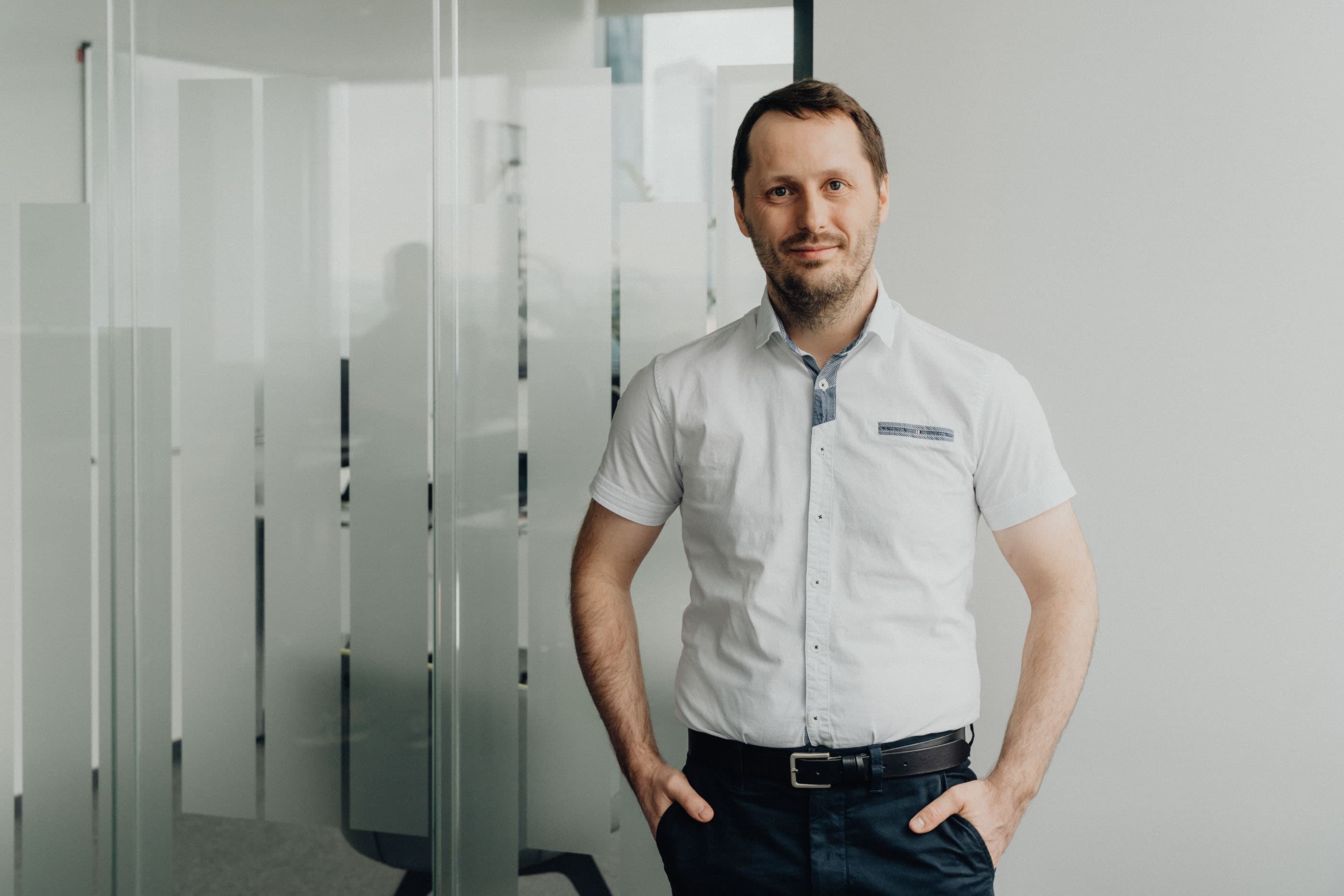Mastering Product Lifecycle Management (PLM) for a Competitive Edge
Marek Pałys
Nov 25, 2022・5 min read
Table of Content
1. What is Product Lifecycle Management (PLM)?
2. Overview of PLM
3. Benefits of PLM
4. Phases of Product Development
5. Product and Process Lifecycle Management (PPLM)
6. Product Lifecycle Manager Skills and Responsibilities
7. Salary of a Product Lifecycle Manager
8. How to Become a Product Lifecycle Manager
9. Careers in PLM
10. Measuring Product Lifecycles
11. Future of PLM Technology
In Conclusion
FAQs:
1. What is Product Lifecycle Management (PLM)?
Product Lifecycle Management (PLM) is a strategic approach that facilitates the management of a product’s lifecycle, from conception to disposal. At its core, PLM integrates business processes, product data, and organizational systems. Product lifecycle management is a crucial aspect for companies that design and produce products, ensuring up-to-date information, effective document management, and streamlined business strategy execution.
2. Overview of PLM
Understanding the intricacies of the product lifecycle is essential for businesses aiming to attain competitive advantage. It encompasses every stage of the product development process and supply chain management, ensuring businesses can effectively navigate engineering challenges and handle data sharing requirements. In this modern age, PLM software plays a significant role, providing tools that automate and optimize the entire lifecycle of products.
3. Benefits of PLM
The value proposition of PLM is vast. Not only does it improve product quality and production efficiency, but it also significantly reduces development costs. PLM systems ensure timely customer feedback integration, which boosts customer satisfaction. Furthermore, PLM solutions enable businesses to launch products in the market faster, giving them an edge over competitors. Companies that embrace PLM technology also have better control over their product portfolio and experience increased market share.
4. Phases of Product Development
Every product undergoes typical stages, from its inception to retirement:
Concept Stage: An idea is born and assessed for feasibility.
Design Stage: This involves computer-aided design and engineering solutions. PLM tools assist in managing CAD data and other design details.
Production Stage: Manufacturing process planning occurs here, focusing on production costs and ensuring raw materials are sourced optimally.
Sales Stage: Products hit the market. Customer relationship management and market analysis are vital during this phase.
Support Stage: This entails providing post-sales services and addressing any issues related to the final product.
Retirement Stage: Here, the product is phased out of the market, and its entire life cycle concludes.
5. Product and Process Lifecycle Management (PPLM)
Going beyond conventional PLM, PPLM encompasses both product and process lifecycles. While PLM emphasizes the product’s lifecycle, PPLM incorporates production process management, ensuring a holistic approach to business processes.
6. Product Lifecycle Manager Skills and Responsibilities
A Product Lifecycle Manager wears many hats. They handle product data management, guide cross-functional teams, oversee the production process, and ensure the business systems are in sync with the product life cycle. Moreover, they are skilled in analyzing data and ensuring data quality. Their responsibilities further extend to managing globalized supply chains and collaborating with global manufacturers.
7. Salary of a Product Lifecycle Manager
The role of a Product Lifecycle Manager is paramount in businesses. Their compensation is reflective of their vast responsibilities.
8. How to Become a Product Lifecycle Manager
Embarking on a journey to become a Product Lifecycle Manager requires mastery over project management, an understanding of enterprise resource planning systems, and proficiency in modern PLM software. Additionally, they need to keep abreast of the latest in machine learning and new communication systems to ensure their skills are up-to-date.
9. Careers in PLM
The world of PLM offers myriad career opportunities, from positions in quality management and portfolio management to roles in development departments focused on designing and building products.
10. Measuring Product Lifecycles
To gauge the success of a product, businesses resort to key performance indicators (KPIs) and competitor analysis. These metrics provide insights into the product value chain, allowing companies to make informed decisions.
11. Future of PLM Technology
With the evolution of technology, the landscape of PLM is rapidly changing. The future promises integration of machine learning, enhanced data sharing capabilities, and even more efficient PLM solutions, ushering in an era of unparalleled production efficiency and quality products.
In Conclusion
Product Lifecycle Management (PLM) is undeniably a cornerstone for businesses in today's competitive market. From ensuring optimal product quality to streamlining production processes, PLM stands as a testament to the evolution of business processes and strategy. Adopting PLM is not just a trend; it's a business imperative. Here at Startup House, we understand the nuances of PLM and are poised to guide businesses into the future.
FAQs:
What is Product Lifecycle Management (PLM)?
PLM is a strategic approach that manages a product’s lifecycle from concept to disposal, integrating business processes, product data, and organizational systems.
Why is PLM crucial for businesses?
PLM ensures streamlined product development, up-to-date information, improved product quality, and faster time-to-market, giving businesses a competitive edge.
What are the stages of a product's lifecycle?
They include the concept, design, production, sales, support, and retirement stages.
How does PLM improve product quality?
PLM integrates customer feedback, ensures data quality, and streamlines design and manufacturing processes to enhance product quality.
Is PLM only about product management?
No, PLM also encompasses process management, supply chain management, and portfolio management.
What's the difference between PLM and PPLM?
While PLM emphasizes the product's lifecycle, PPLM (Product and Process Lifecycle Management) incorporates the production process, ensuring a holistic approach.
How do PLM systems aid in reducing costs?
PLM systems streamline design, manufacturing, and supply chain processes, reducing development and production costs.
Are there career opportunities in PLM?
Yes, the world of PLM offers various career opportunities, including roles in quality management, portfolio management, and product design.
What skills are essential for a Product Lifecycle Manager?
Skills include mastery over project management, understanding of enterprise systems, proficiency in modern PLM software, and staying updated with the latest technological trends.
How does PLM benefit the sales stage?
PLM ensures products are of high quality, meet customer needs, and are launched promptly, leading to better sales outcomes.
Can PLM integrate with other business systems?
Yes, PLM can integrate with systems like enterprise resource planning (ERP) and customer relationship management (CRM).
What's the role of machine learning in the future of PLM?
Machine learning will enable more intelligent data analysis, automation, and predictive capabilities in PLM solutions.
Is PLM relevant for all industries?
While particularly beneficial for manufacturing and design-focused industries, PLM principles can be applied across various sectors for product and process optimization.
How does PLM handle customer feedback?
PLM systems integrate customer feedback throughout the product development process to ensure products align with market needs.
What is a PLM software?
PLM software provides tools that automate and optimize the entire lifecycle of products, from design to retirement.
Why is data quality crucial in PLM?
Ensuring data quality is vital for accurate product design, manufacturing, and market analysis, all of which are pillars of successful PLM.
Can PLM reduce time-to-market?
Yes, with efficient product development and management processes, PLM solutions can significantly reduce the product's time-to-market.
Is PLM only for large corporations?
No, businesses of all sizes can benefit from PLM to improve product development, management, and overall business processes.
How do globalized supply chains fit into PLM?
PLM systems manage and optimize globalized supply chains, ensuring timely sourcing of materials and efficient production processes.
What's the future of PLM technology?
The future promises enhanced data sharing, machine learning integration, and even more efficient PLM solutions for businesses.
Digital Transformation Strategy for Siemens Finance
Cloud-based platform for Siemens Financial Services in Poland


You may also like...

The Power of Prototyping: How Startups Achieve Success on a Budget
Prototyping empowers startups to test ideas, save money, and increase their chances of market success.
Alexander Stasiak
Mar 14, 2025・8 min read

Unleashing Creativity: How Design Thinking Transforms Product Development
Design thinking blends creativity with problem-solving, helping teams build user-centric products that truly resonate.
Alexander Stasiak
Apr 08, 2025・12 min read

How to Choose the Best MVP Development Company for Your Project
Choosing the right MVP development company can make or break your product — here’s how to find the perfect partner for a successful launch.
Alexander Stasiak
May 26, 2025・7 min read




